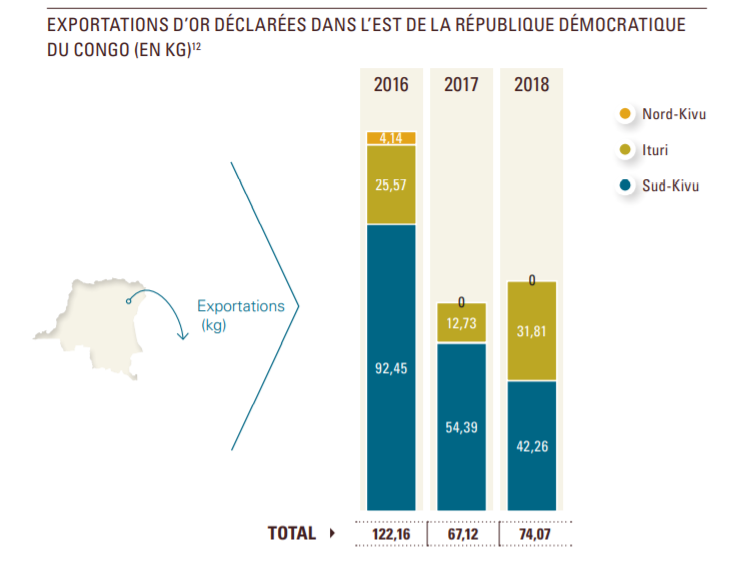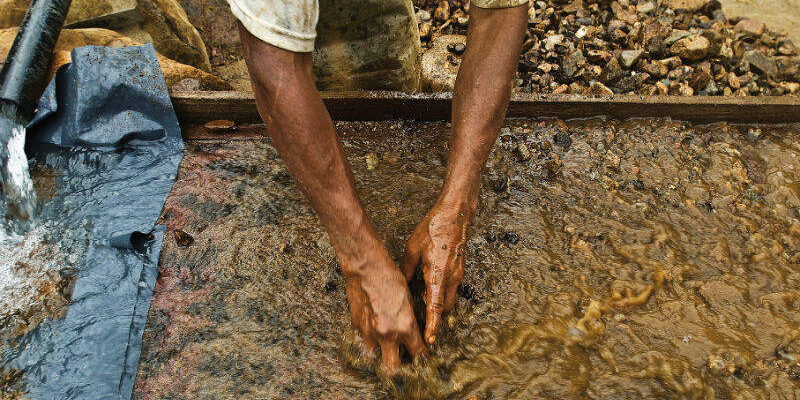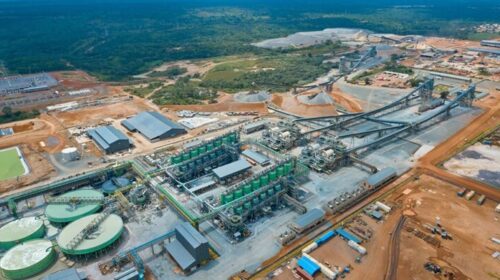DRC loses more than USD 10 million in revenue every year as a result of smuggling artisanal gold
Gold smuggling causes the DRC to lose more than USD 10 million in tax revenue each year, this is according to a report by NGO IMPACT which has just been published in September 2020.
According to an estimate by the Federal Institute of Geosciences and Natural Resources in Germany (BGR, Bundesanstalt für Geowissenschaften und Rohstoffe), the gold production of the DRC amounts to 15 tons per year, which represents 543 million USD. If exporters declared all of this production and paid the official export tax (2%), the DRC government would collect approximately USD 10.86 million in tax revenue annually. On the other hand, the 56.18 kg of gold officially exported by the National Ministry of Mines in 2018 – valued at USD 2.2 million13 – would bring only USD 44,797 in tax revenue.
In its report, the NGO IMPACT acknowledges that it is difficult to accurately assess the amount of gold smuggled into eastern DRC, because most of it has been undeclared since the start of the chain. supply to the mine site.
“Although it is difficult to determine precisely the volume of gold production in the DRC, two conclusions can be reasonably drawn. Most of the gold that leaves the country comes out illegally and is not reported to the authorities. The United Nations Panel of Experts estimates that around 98% of the gold produced in the DRC was smuggled out of the country in 2013 ”. Only a fraction of gold production has been officially declared and legally exported, ”the report reads.
In 2015, the total artisanal gold exports of the DRC, all provinces combined, officially stood at 253.98 kg and has continued to decline since, notes IMPACT. In 2016, the country exported a total of 244.42 kg of gold. In 2017, the DRC exported only 230.29 kg of gold, and only 56.18 kg in 201810.
Note that in 2019, statistics from the DRC Ministry of Mines suggest a volume of 333.39 kg of gold produced by artisanal miners.

Highlighting the weaknesses in the collection and aggregation of DRC mining statistics, the IMPACT report notes that the three eastern provinces reported a combined total of 74.07 kg for 2018. This figure exceeds the 56.18 kg recorded by the Ministry of Mines for the whole country for the same period. The ministry did not have updated figures for these provinces for 2018, while the CEEC did not have national data for that year, the report argues.
In its conclusions, IMPACT calls in particular for the establishment of traceability mechanisms. These would mainly be projects that would aim to demonstrate that traceability and the exercise of due diligence for artisanal gold originating from conflict or high risk areas was possible.
Entitled “The intermediaries. These traders who undermine the efforts of the Democratic Republic of the Congo in favor of conflict-free gold production ”, this report discusses the two main types of illicit gold trade in the DRC: Cross-border smuggling of large quantities of gold by known traders and exporters without fear of significant consequences; Informal traders, their role in the local gold economy and their link with pre-financing networks.
All the artisanal gold smuggled from the DRC by Rwanda and Uganda. These two countries are doing nothing to curb this illicit trade, the report accuses.
45 total views , 1 views today





